A concerto from 1915 that requires its soloist to switch between violin and viola is receiving its world premiere on 26 April 2024. Orchestrator Kenneth Martinson shares details about this long-lost work
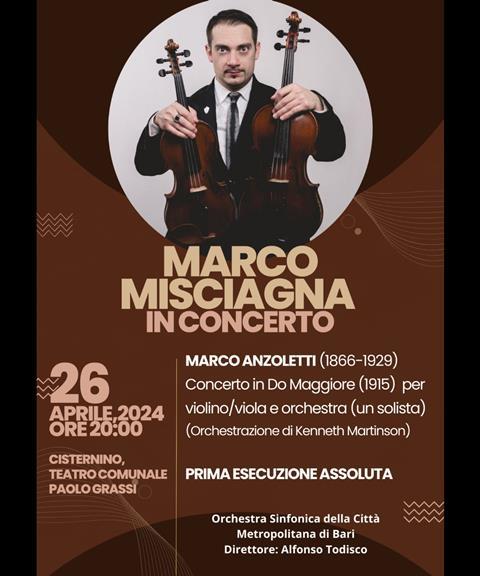
Discover more Featured Stories like this in The Strad Playing Hub
The world premiere performance of the Concerto in C major for Violin and Viola by Marco Anzoletti (1866-1929) takes place on Friday 26 April in Bari, Italy. What marks out this work as extraordinary is that it is written for a single player who must alternate between both instruments throughout. It’s believed to be the only concerto ever written that requires such a feat from its soloist.
Kenneth Martinson, violist, professor and arranger, explains how he rediscovered the 1915 work, orchestrated it from the only existing score, a piano reduction, and collaborated with its brave soloist, violist–violinist Marco Misciagna, in bringing the first performance to fruition.
The soloist
At the heart of this momentous occasion lies a remarkable collaboration between me and Marco Misciagna, a virtuoso of both the violin and viola who will bring Anzoletti’s vision to life. Marco and I previously collaborated on another of Anzoletti’s concertos, the Viola Concerto no.1, which he premiered at the 48th International Viola Congress at Mahidol University, Thailand, in June 2023.
Marco and I first met at the International Viola Congress when it was held in Cremona, Italy, in 2016, and as our friendship grew, I became aware of his love for Anzoletti’s music through his admirable YouTube recordings of Anzoletti’s solo studies – repertoire that is required learning material in the syllabus for violists at the Milan Conservatory. It was Misciagna’s expertise that led me to ask him to perform the world premiere of the Viola Concerto no.1 and subsequently the premiere of the Violin and Viola Concerto.
Bringing the score to life
Anzoletti’s music strikes me as late Romantic, perhaps best described as an ‘Italian Brahms’. There is no evidence of him ever creating a score, parts, or orchestration for either this work or the Viola Concerto no.1, and the biggest challenge was deciding the size and instrumentation for the orchestra from the piano reduction, which had no instrument indications whatsoever.
I had to choose whether to look at the other orchestrated concertos of Anzoletti (only two of his 19 violin concertos in fact were orchestrated by himself), or whether to base my choices on inspiration and imagination. I ended up doing a combination of both, where I tried as much as possible to let the music speak to me, and somehow channel Anzoletti’s mind from the heavens, while also taking into consideration that in his other concertos he uses woodwinds in pairs, and a seemingly full-sized orchestra.
In this concerto, the music itself had parts that seemed idiomatic for the harp; this, combined with a general element of a ‘French style’ I was sensing in the music is led me to adding a harp to the orchestration.
The challenge of transitioning between instruments
The concerto has three movements and requires the following changes: First movement, violin/viola/violin/viola/violin; second movement, violin/viola; third movement, viola/violin/viola/violin.
One of the most intriguing aspects of this concerto is soloist Marco Misciagna’s mastery in switching between the violin and viola – a feat that requires not only technical prowess but also a deep understanding of each instrument’s nuances.
As Marco prepared for the performance, he emphasised the importance of proficiency on both instruments and extensive practice to ensure seamless transitions – a testament to the dedication and discipline of the modern musician.
A logistic concern unique to this piece is having to come onto the stage with two instruments and find a graceful way to shake the concertmaster’s and conductor’s hands before placing the instruments on a table nearby.
Switching between the violin and viola requires not only technical prowess but also a deep understanding of each instrument’s nuances
Music only written for its own sake?
Beyond the notes lies the enigma of the composer himself. Anzoletti, a distinguished violinist and former violin-viola professor at Milan Conservatory until 1928, left behind a prolific oeuvre, notably comprising approximately 250 works for violin and piano, the majority of which remain in manuscript form at the Biblioteca comunale in Trento.
Why did he pen this concerto, only to leave it unpublished and unperformed? While we can only speculate, it’s evident that Anzoletti was a man driven more by the creative process than self-promotion. Based on the extreme level of virtuosity, and from what we know about accounts of Anzoletti’s abilities as a player, it is very likely that he may have been the only person around his locality of Milan with the technical abilities to perform his own music, which explains why he may not have sought to get it published or distributed so others could play it.
I can only imagine how pleased and surprised Marco Anzoletti would be knowing this piece is being premiered 109 years after it was written. Soon, I will also be orchestrating the Viola Concerto no.2 in B major (1915), and the Double Concerto for Violin, Viola and Orchestra in D major (1906).
The world premiere of Marco Anzoletti’s Concerto in C major for Violin and Viola takes place at 8pm on April 26, 2024, with soloist Marco Misciagna, the Sinfonica della Città di Bari and conductor Alfonso Todisco, at the Teatro Comunale Paolo Grassi in Bari, Italy. Find out more here: https://bit.ly/3Qfnpxm
Read: Postcard from Bangkok: International Viola Congress
Read: Photo gallery: the Bursik ‘Milanolo’ five-string violin
Read more Featured Stories like this in The Strad Playing Hub
The number one source for playing and teaching books, guides, CDs, calendars and back issues of the magazine.
In The Best of Technique you’ll discover the top playing tips of the world’s leading string players and teachers. It’s packed full of exercises for students, plus examples from the standard repertoire to show you how to integrate the technique into your playing.
The Strad’s Masterclass series brings together the finest string players with some of the greatest string works ever written. Always one of our most popular sections, Masterclass has been an invaluable aid to aspiring soloists, chamber musicians and string teachers since the 1990s.
American collector David L. Fulton amassed one of the 20th century’s finest collections of stringed instruments. This year’s calendar pays tribute to some of these priceless treasures, including Yehudi Menuhin’s celebrated ‘Lord Wilton’ Guarneri, the Carlo Bergonzi once played by Fritz Kreisler, and four instruments by Antonio Stradivari.

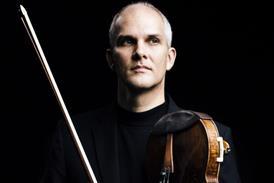
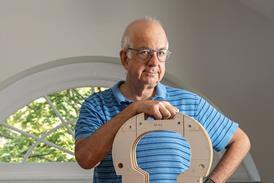

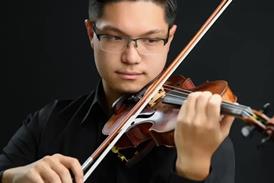
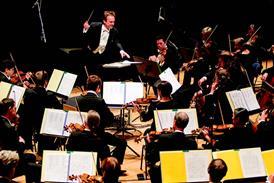







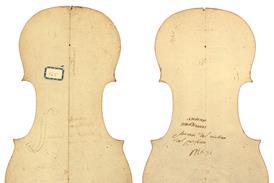


















No comments yet